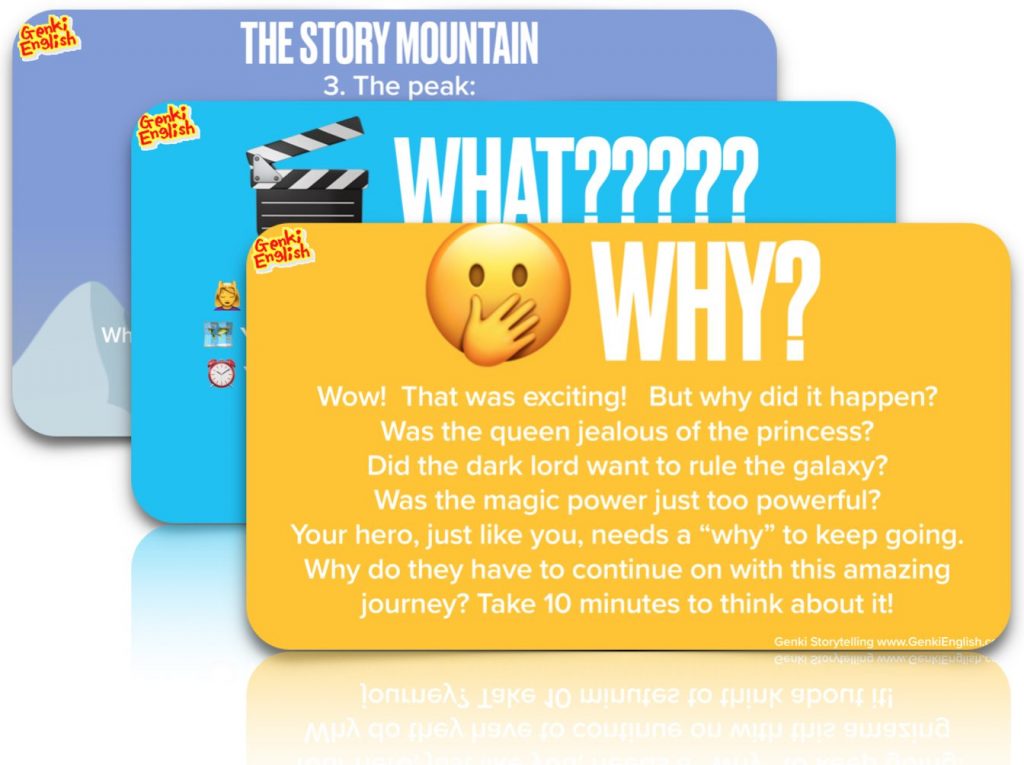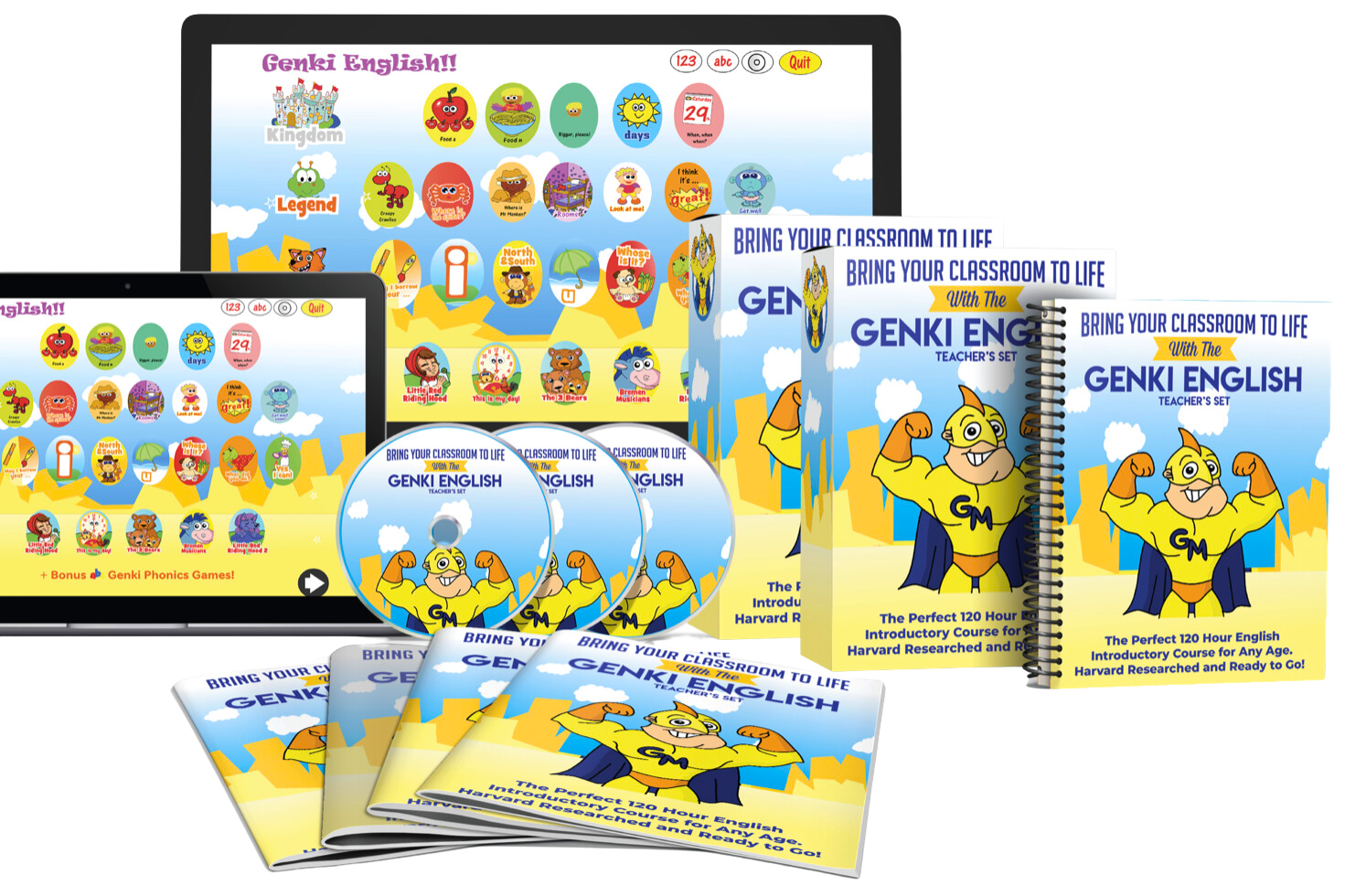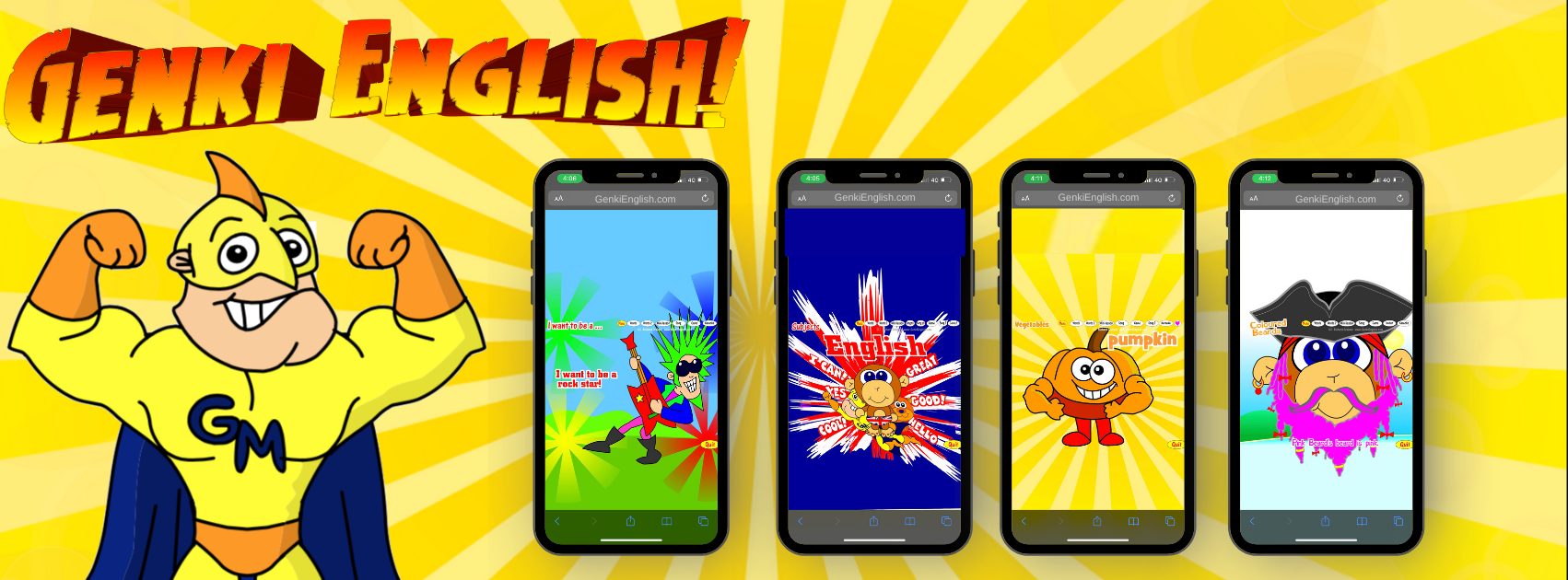 Lots of people have been asking me about Genki Writing.
Lots of people have been asking me about Genki Writing.
For example Oronia wrote in to ask:
——————————-
I have a class of ESL students. I would like to help them with Writing in English. They seem to go on google translate and then copy all the phrases they translate and then turn it in as ‘writing’.
Any suggestions? I really want to see these group of kids succeed this year.
——————————-
It’s fantastic that you want your students to succeed this year! So …..
The Short Version :
1. Use the imagination worksheet for today’s lesson as a base. (Because a blank sheet of paper is terrifying!)
2. The kids write down the picture they just drew.
That’s it, creative writing in 2 steps. 🙂
OK, that probably was a little too short.
If you want the more in depth answer …..
First of all … just what is writing?
So first of all we have to ask “Just what is ‘writing’?”
It’s not tracing – i.e. going over pre-written phrases – that’s tracing, as the name implies.

And it’s not copying – like with Oronia’s students with google!
Similarly it’s not dictation, where the teacher says a sentence and the kids write it down.
Writing is very simply:
Taking an idea from your head and communicating it in the written form.
Ninja Tip: Notice you need both parts, the idea in your head that you want to communicate *and* the physical act of writing (or typing) it. Many English “writing” activities just concentrate on the latter, which doesn’t get us to our goals.
When to teach writing?
Some “experts” suggest that “all four” English skills should be taught together from the beginning.
But, as we’ve all seen from government high school programmes around the world, in most cases this has proved disastrous with the side effect of destroying motivation, accents and oral communication skills. (Unless of course your sole aim is passing written exams.)
I always want to focus on the learners, and the learning, side of things so I’m going to assume that confidence, great communication skills and, finally, exams are your priorities here.
Does that sound good?
If so, read on….
Preparation – Listening/Speaking/Reading
Before doing writing we have a few pre-requisites, things we have to teach first.
So first we need the 30 to 100 hours of spoken lessons to get their grammar, English competency and “feel” for the language up to speed.
Ninja Tip: The nearer to 100 spoken lessons you get before starting reading/writing the better your reading & writing results will be.
Once we have a good spoken base then we need to introduce reading with Genki Phonics.

(You could of course use any other good phonics programme. But as Genki Phonics is so tightly tied in with Genki English and is free to VIP members we’ll use it here.)
Ninja Tip: You have two options with the reading, either introduce the “5 Minute Phonics” (the first video on this page) at the end of each regular Genki English lesson. (Remember you should be at least 30 lessons into the curriculum before starting the phonics.) If you are new to phonics then this is definitely the easiest option to do. Or if you have finished the whole Genki English curriculum and are confident in teaching the 5 Minute Phonics then you could move up to the full 35 – 45 minute phonics lesson. Or you could always add a few of the 35 – 45 minute lesson plan ideas into your 5 minute phonics if you are in between confidence wise!
Finally we get to the writing!
OK, so we have listening, speaking and reading up to speed.
Cool.
Now it’s time for writing!! 🙂
Ninja Tip: You know how we have to keep waiting for the new iPhone each year? Well keeping writing for later in your course, especially when the older kids *want* to do it, makes them even more passionate about it when you finally start. If you introduce it too early with some boring tracing, copying etc. then the passion soon dies. But let the demand build up and up and up and you’ll have some amazingly motivated budding writers!
As we said above, writing is just taking an idea out of your head and communicating it on paper. (or screen)
That sounds simple but is quite a big task.
The Blank Page Terror
And it’s made even worse, even for experienced writers, when we have to start with a totally blank piece of paper.
It is terrifying for anyone!
So what we need is a little something to kick-start the process, a little stepping stone to get started.
Ninja Tip: And this doesn’t mean “fill in the gap” type exercises. Again there is no creative thought there, you’d just be copying someone else’s words.
By far the best way we’ve found is to start off by drawing with the Imagination Worksheets.
As you can see from the videos, because of the way the sheets are structured the kids come up with all sorts of crazy ideas that are completely, totally, 100% different from each other and indeed from anything we could have thought up!
So we have the dual advantage of:
1. Taking away the fear of the blank page and …..
2. Personalising it, this is your own unique drawing, no one has anything else like it!
So the kids do their Imagination Worksheet first.
And then we get them to write about what they have drawn!
With just one word…..
Obviously we need infinite patience here again but let’s remember
It all starts with one word.
This is the very first time they have ever written anything in English.
And certainly the first time something that they have thought up themselves.
So one word is fine.
And never underestimate the feeling of pride this brings. It is *awesome*.
So we praise and get them to add another word.
And another.
And eventually a sentence.
Or two.
Or three.
And by then we’re well on the way to being a real writer.
Feedback, feedback, feedback
We still have the technical challenge of getting the correct words, sentences, grammar etc. but because we have prepared the ground with a great speaking and reading base they are already light years ahead of their school mates who haven’t been to your class.
And because the actual content is their own idea they become so much more passionate about it.
So you give feedback, correct mistakes and set more tasks for them.
Rinse and repeat.
This feedback and goal setting is the role of the great teacher.
Then we expand the horizons.
So why not try an imagination worksheet with three boxes to start a story.
Or a complete comic book.
Or eventually to a full, structured written story:

Adding in this drawing stage is so powerful for so many students and helps our sanity as teachers no end.
I’m sure you are going to be *very* impressed.
Are you ready?
So if your kids are ready, give it a try, let us know if you have any questions in the comments and do let us know how you get on!
Be genki,
Richard
P.S. Ninja Tip: One key to *great* writing is to simplify, simplify, simplify. If the kids don’t know how to write something, get them to think of a simpler way to say it in their own language. Keep going round and round and eventually they will have it so simple that they can say and then write it in English. “If I had more time, I would have written a shorter letter.” is the quote often misattributed to Mark Twain. Now if only I’d made more time for this post. 🙂




Thanks for this topic~ just working on a writing project for another class, for tomorrow. So good to be reminded of the major points.
Any chance to have some imagination worksheets of the newer topics?
(First needed would be dinosaur and winter sports and the other volume 14 topics)
Wowow, so the biggest challenge here really is patience, isn’t it?
I did try this bits and bits before, but I was never consistent enough and just gave up for more reading and conversation.
However this time I have a class finished early enough with the reading part, so I want to get this thing done.
They are good with reading, but the only writing we’ve done during the phonics course is the writing on the worksheets (GE phonics)
Now, starting with writing on these creative writings they write like:
“jiyanpu” instead of “jump, for example
I can see “maus” instead of “mouse” or “hed” instead of “head”.
but with the “Jump” it is one example where they go back to the japanese pronunciation when thinking of writing. They know the word and have a great pronunciation when speaking, saying a clear great “jump”.
Also when reading the word they read “jump”
But when writing there seems to be a different button pushed on.
What to do?
another question:
would kids be allowed to check the spelling for example in the software?
Especially if they do it at home on their own?
I guess writing without checking just with the sounds in their head is the point, but then I know many of the kids would be very anxious and uncomfortable.
Hi Margit:
RE jiyanpu: Interesting this one isn’t it! Head/hed etc. are regular mistakes that kids have to work through so no worries there, then for the jiyanpu as you said it’s the reverting to the Japanese pronunciation. SO …. what I’d suggest is to add in a few more of the games that we did in the Shiga video (4th video on the phonics page) , where they have more practice at splitting the English sounds up with the teacher giving feedback.
RE Imagination Worksheets: Let me see what I can do!
RE Software checking: I haven’t really looked at this much. I guess it could work if the software was fun enough and the kids had set homework to get through!
@Margit: Am I just being too lazy with these???
http://genkienglish.net/clipart/imaginationworksheetsvols1314.pdf
Richard,
THANKS! I really like them! Will you add them to the file?
Cool, glad you like them! I’ll keep them as a separate file, the other one was getting too big. 🙂
I’ll try and come up with some more imaginative ideas for the next ones!
Well, I think we are pretty much done, except for volume 11?!
Will you put them somewhere, though as “Imagination worksheets volume 2” or sth like that , so that we can google for them?
Thanks for that Margit, if you’re cool with these I just added worksheets for vols. 11 and 12 to the file:
http://genkienglish.net/clipart/imaginationworksheetsvols1314.pdf
I’ve also linked them up on the main Imagination Worksheets page:
http://genkienglish.net/imaginationworksheets.htm
Any more that we are missing for the earlier themes?
With all the new worksheets – especially Amye’s great new ones! – I need to hire someone with Flash/pdf skills to chop them all up and add them to the individual song pages!